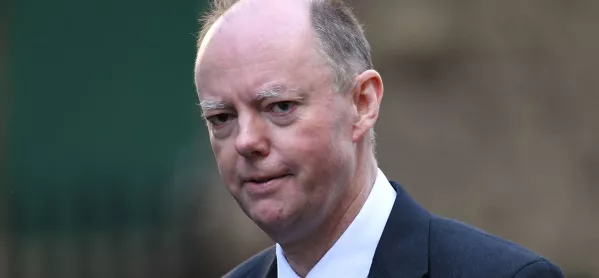There is “no doubt” that opening schools would increase the spread of coronavirus, the chief medical officer for England said today.
Speaking at the government’s daily briefing, Professor Chris Whitty said that, while scientists are “still really learning” how children influence “the actual spread of this virus”, pupils being at school “certainly contributes” to an increased rate of infection.
He added that the government is “getting closer” to establishing to what extent sending children back to school could push up the infection rate.
Coronavirus: NHS workers’ call to ‘keep teachers safe’
Response: How do we reopen schools safely?
MP: Put ‘army’ of retired teachers into schools
Professor Whitty was asked to what extent his advice has changed on sending children to school; if he has worked out what impact this may have on the “R” rate [rate of infection]; and if he believes that children can spread coronavirus to other children.
Reopening schools ‘would spread coronavirus’
He said: “It remains the case that the great majority of children either don’t get coronavirus, or if they do, that the symptoms are minor.
“That doesn’t mean, sadly, that is absolutely true - there are still a small number of cases, including some very severe cases, but they are relative to adults - much less than adults. So that remains absolutely the case.
“So the first reason for not sending children to school, which is it’s particularly dangerous for them - that wouldn’t be true in the case of coronavirus.
“Secondly, there is no doubt that they contribute - if you have schools open - it does contribute to increasing the ‘R’.
“So if you close schools, the ‘R’ goes down - it’s part of the collection of things that were done in March to try and pull the ‘R’ from where it was - near three - to where it is now - below one.
“If you did it just on its own it wouldn’t be enough, but if you stopped doing it, you would actually lose some of the benefit that we’ve currently got.”
He added: “There is a quite a debate at the moment around the world in science, what contribution do children make to the actual spread of this virus between families around the country, wherever we’re talking about - and is it different, for example, between young children and older children - which it may be.
“But unfortunately we do not yet have direct data that [would] really help us...we are still really learning on this one.
“While I think it remains the case that we think that the contribution of children at school to the spread of this virus is probably less than, for example for flu, we do think it certainly contributes - and what we’re trying to work out is what proportion of the ‘R’ it contributes, and therefore if children went back to school how much closer to one - and that’s in a bad way - would we be, and could it even tip us above one, and what could do we do, if so, to try to minimise that.
“So it’s a very good question to which there is unfortunately not a really clear answer. But we are getting closer, I think, to having a slightly narrower range of uncertainty around this.”




